-
Posts
14,343 -
Joined
-
Last visited
-
Days Won
25
Content Type
Profiles
Forums
Blogs
Gallery
Events
Store
Posts posted by Ed_Haynes
-
-
As there are, in most cases, no "official" miniatures, this is not at issue. These seem to be an interesting portion of a novelty collector's set of numismatic medallions (not "medals" in the we we phalerists use the word) representing the reverses of a number of British campaign medals. You can imagine these things done up in a fitted case for sale to collectors of table medals.
The obverses are of course incorrect and the time span of even just these few suggests it isn't something involved in the manufacturing process (things like the MGS and 2nd Punjab medals predated the common wearing of miniatures in any case) = not samples of the proper reverse designs made available to the manufacturers (unless they were manufacturers targeted soley on the collector's market only, and there may be indelicate words for this activity).
In any case, an interesting fringe novelty item.
0 -
More on "vajra" from a manuscript I am doing final illustration reconcilliation on just now:
. . . Indra?s Vajra (the all-powerful mythic weapon on the ancient Vedic god of war). Great mythology surrounds this mysterious weapon of Vedic origin. It was the amogha astra (unfailing weapon) used by Indra to kill Vitra, the demon of drought, to release life-giving waters for the benefit of mankind. In Puranic literature it is said that this Vajra was made out of the asthis (bones) of Dadhici, a sage of high attainments, for the benefit of the world.
And . . .
Ed are you taking language lessons for the impending expedition??
Teach yourself Mongolian. For all the good that is likely to do?! And just as I start working on it in Cyrillic, the language is being switched back to the pre-1940 script!
0 -
Does the QSA represent all possible bars or all bars indians did/may have qualified for?
The multi-clasp medals are specimens with all (ALL) clasps, regardless of who could have qualified for them. Just await later pictures!
 0
0 -
Guys, is Battushig's work the only reference out there at this time?
Short answer: Yes.
0 -
Where's Ed when you really need him? He probably just visited it.
Actually, I am in New Delhi. Have not spotted it here.

Another week and a few days before Moscow and Ulanbaatar.
Ed
0 -
And a final one, for now. Will post more if no one complains.
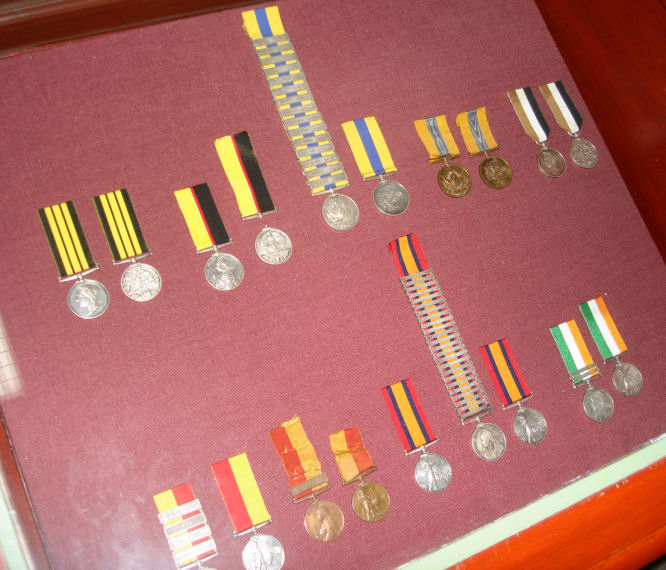
 0
0 -
-
-
-
While work is still actively underway on refurbishing and redisplaying their medal collection, I have attached some preliminary snaps of the medal collection held in the United Service Institutution (India) in New Delhi. Most are mint specimens from just before WWI, though some are named.
Things are (mostly) ribboned, short descriptive notes have been added to most cases, and the lighting system has been revised (no more overhead natural ribbon-fading light, but now florescent tubes that reflect badly in horizontal glass -- better, but not perfect).
The pictures are not the greatest, sorry.
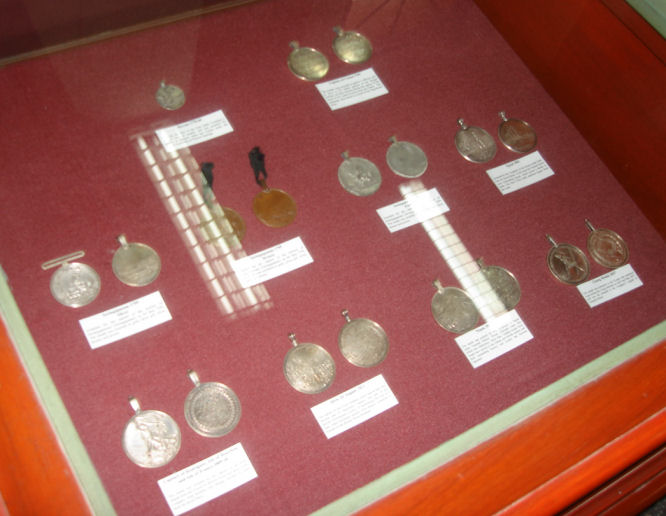
 0
0 -
It could be good to watermark the pictures.

That does (intentionally) obscure the details of otherwise high quality pictures. What trade-offs are worth making?
0 -
0
-
Congratulations on the new arrival! Like any other book, not perfect, but darn nice. Try to find time to get some sleep in between your power-lifting exercises with this wonder.

It will indeed be a sad day when the (probably close) moment arrives when these are no longer to be had.
0 -
"Thunderbolt" is a better translatioon for "vajra" than the unfortunate "precious rod" with which we have been stuck.
See, of course, http://gmic.co.uk/index.php?showtopic=5412
Antonio seems to be representing the second class ribbon?
0 -
Pretty stuff
 0
0 -
Amazed, I'd think there'd be someone out there would make up such FAKE groups.
0 -
It is good to see authentic medals and documents, up close and personal. By having such examples before us, we may be better armed against the fraudsters. Many thanks, all!
0 -
And one of the many (MANY) prints, many on military themes.
Hope to have word on medal access "soon". They do not, apparently, have a catalogue.

 0
0 -
A large painting from and of the 1911 Durbar.
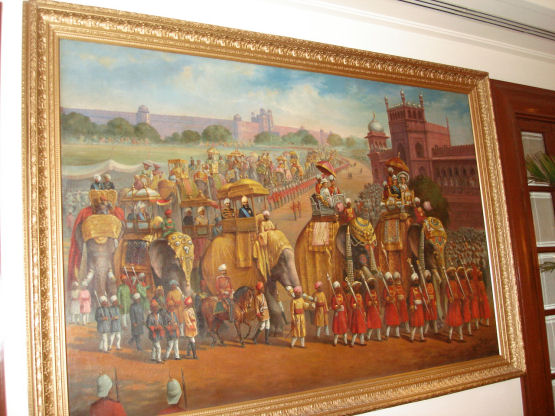
 0
0 -
-
Your wish is my command, especially as I still have good internet access.
A few snaps on the way to breakfast:
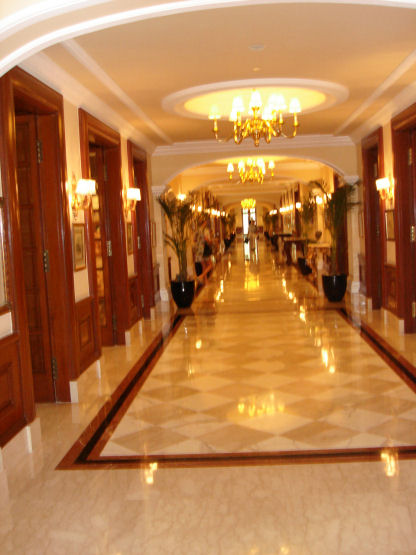
 0
0 -
Glad to see this thread. I have always considered these to be one of the more dangerous awards out there. There are so many very good fakes!
0 -
And my favourite frame there.
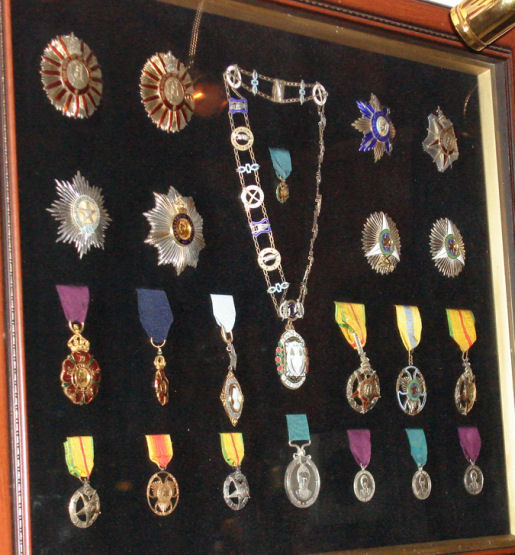
 0
0 -
One you have seen before I think, but another 'teaser'.
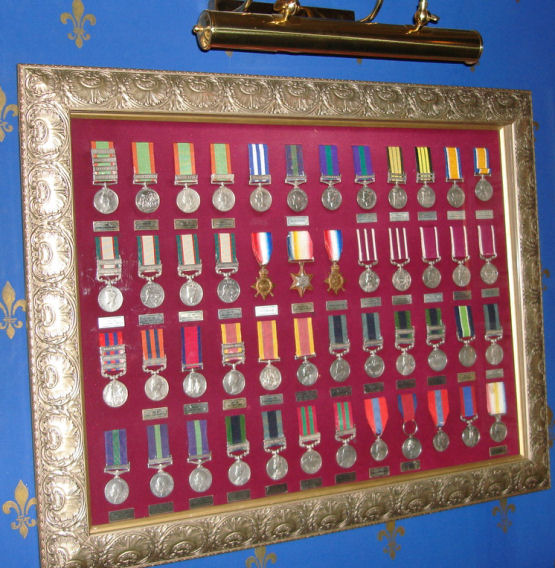
 0
0




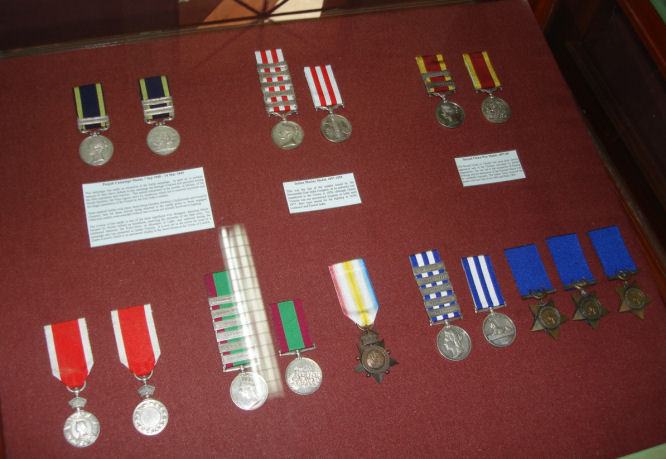
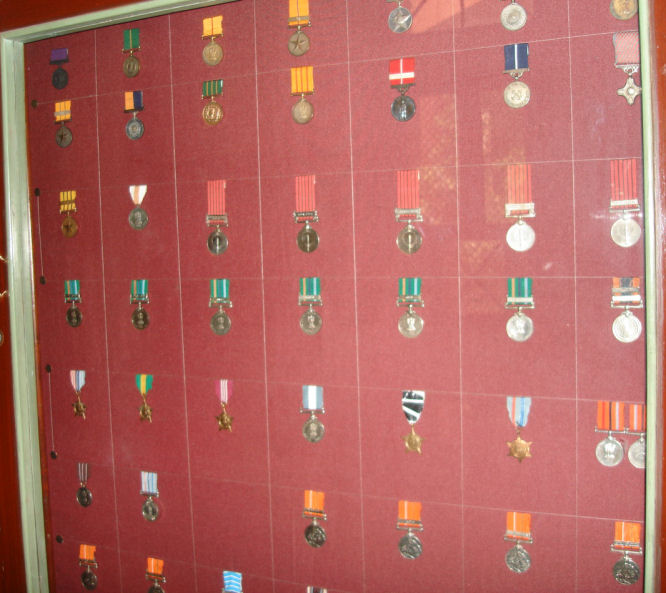

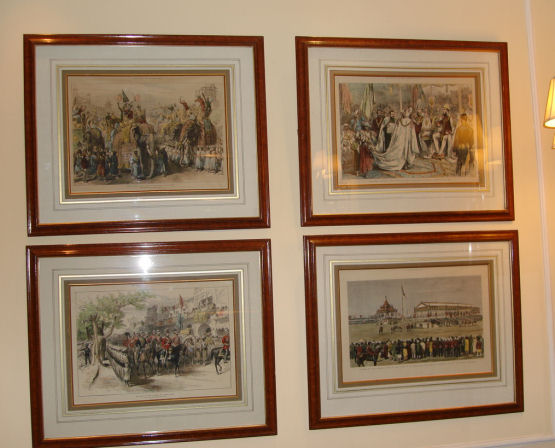
Identification help: Egyptian/ German East African Colonial Group
in Great Britain: Orders, Gallantry, Campaign Medals
Posted
An interesting group, with some inventive mounting, one that raises more questions than it answers:
1- The naming on the Egypt Medal: Is this exactly as it reads? This would seem to be a medal to an Egyptian then, rather than to a Britisn (or imperial) subject. Yet most of these were named in Arabic, not English.
2- The Khedival Star: Which variety?
3- The ribbons are, at best, eccentric on these last two and the order is odd. It would suggest an award to an Egyptian who wore his medals in the proper order (for him), but with the wrong ribbon on the Khedive's award?! But then why mount the German stuff at the beginning?! Does the mounting seem "period"?
My first impression would be some sort of Egyptian courtier, ex-military, but the order and the absence of anything else Egyptian seems odd.
Very curious.